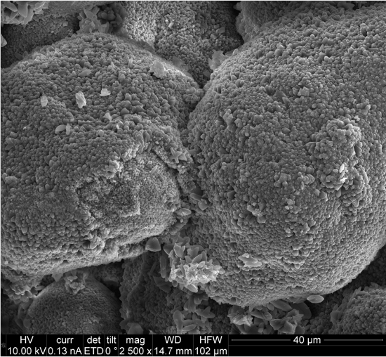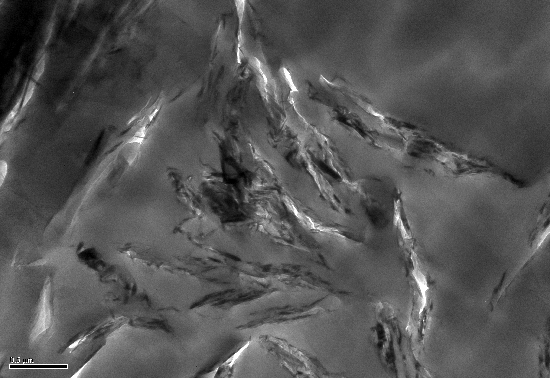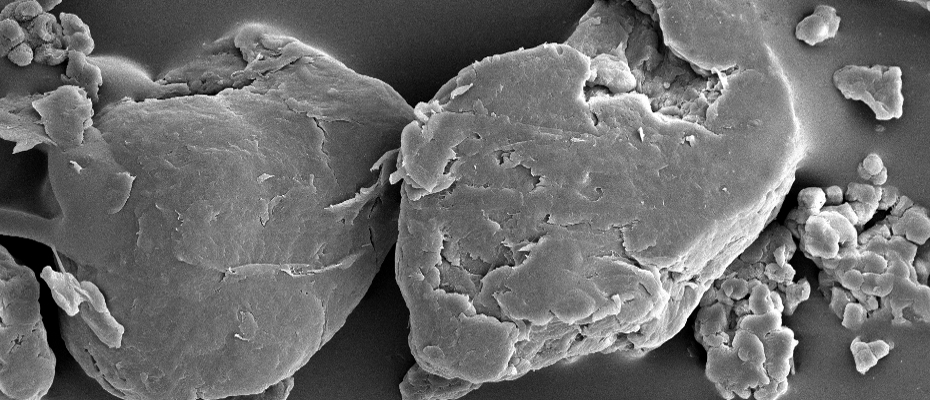Additive Manufacturing: Multifunctional materials, MOFs and crystallisation kinetics
Multifunctionality (nanocomposites and MOFs)
The next phase in the development of AM materials is to add multifunctionality such as improved mechanical performance combined with thermal or electrical conductivity/insulation, electromagnetic shielding or adsorption properties into the materials.
This would allow designers to take the free form design advantage of 3D printing to the next level, further removing additional shielding or componentry currently required, by combining it in the building blocks of the materials being used. This would allow further optimisation of shape and form as well as reducing weight.
Crystallisation kinetics of polymers, blends and composites - relationship with manufacturing process
CALM has carried out a number of projects to understand rate of crystallisation, morphology of crystals within a structure as a function of manufacturing parameters and process conditions. This is critical in order to obtain structures with optimum mechanical performance.
Research projects include:
The University of Exeter has developed a range of MOF polymer materials that can be used in additive manufacturing to produce complex structures. In these materials the MOF crystals are nucleated on the surface of the polymer granules preserving the inherent porosity of the MOFs. When the polymer granules are fused by selective laser sintering during additive manufacturing the MOF’s remain substantially on the surface of the polymer structure.
The effectiveness of this technique has been demonstrated by nucleating ZIF 67 on the surface of PA2200 (polyamide 12) and then 3D printing a porous cubic structure. The 3D printed porous structure was found to have a CO2 adsorbtion capacity approximately 5x greater than alternative MOF polymer blends such as HKUST 1/PA12 where the MOF is incorporated as a filler material. The fabrication technique has also been found to work for a range of polymer materials including polyaryletherketones (PAEKs) and polyoelfins as well as polyamides and with a range of different MOFs.
The technology is currently at TRL 3-4 with proof of concept demonstrated in the laboratory. 3D MOF polymer materials have been manufactured at a kilogram scale but the methodology is easily scalable to production volumes.
Funded by: Innovate UK - ICURe programme


Combining nano-particles with PAEK polymers, this project is looking to develop new bespoke lightweight multifunctional materials that can be 3D printed using powder bed fusion technology and FFF. PAEK polymers are temperature resistant, tough, and corrosion resistant. They are increasingly being used for metal replacement within aviation and military application.
Boron nitride and graphene have been selected as the nano-materials most suited for the intended applications here. These new materials will offer multifunctional capabilities including lightweighting, thermal and electro-magnetic properties. Incorporation of nanomaterials with different particle sizes and shape which will significantly affect powder flow, polymer viscosity and subsequently sintering mechanisms are very important to the success of this project.
The project will study the surface chemistry of the nanoparticles for good interface bonding with PAEK; fabrication of the composite powder (encapsulation of the nanoparticles either on the surface or within the bulk of the PAEK particles) and laser sintering of these new powders. Powder properties (bulk density, compaction, shape - roundness and circularity, aspect ratio, viscosity, surface tension) are key parameters for a good sintering process,
Funded by: Innovate UK
Partners: Qioptiq Ltd, Thales UK Ltd, Victrex Manufacturing Ltd, Hosokawa Micron Ltd, Airbus Operations Ltd, 2-DTech Ltd, Haydale Ltd

The aim of this project is to develop novel high performance, nanocomposite feedstock powder materials and filament for two processes: Laser Sintering and Fused Deposition Modelling (FDM). It will examine the potential use of inorganic fullerene-like tungsten disulfide (WS2) as nanofillers for high value, PAEK (Poly Aryl Ether Ketone) based products.
The incorporation of these nanomaterials has been shown to improve thermal, mechanical and tribological properties of various thermoplastic polymers. It reduces wear and the coefficient of friction as well as offering processability benefits with dispersion characteristics that are superior to 1D and 2D nanoparticles. They are also the best shock absorbing cage structures known to mankind and importantly, they are non-toxic and thermally stable.
Funded by: EPSRC
Partners: University of Exeter and Ulster University. Supported by Victrex Polymer Solutions, Laser Prototype Europe, Bombardier Aerospace, Daido Metals Co. Ltd.
This 6-month feasibility study is proposing to combine the unique properties of two materials - Carbon nano tubes (CNTs) and high temperature polymers (PEEK) - with the exceptional capabilities offered by laser sintering to achieve lightweight parts with complex geometries and enhanced mechanical performance such as strength and fracture toughness.
This research is a key enabler towards the development of highly complex multifunctional structures. The incorporation of the CNTs into polymeric powders for use in additive manufacturing is envisaged to provide good CNT dispersion across the manufactured part, and enhance part strength in all directions (X, Y and especially Z direction, generally known to give weak structures in SLS processes).
This study will allow for the first time the use of the bespoke high temperature laser sintering system P800 (EOS, 2013).
Supported by: Airbus Group Ltd
Funded by: Defence Science and Technology Laboratory [DSTL]
Carbon nanotubes (CNTs) are of great interest for the next generation of composite materials due to their exceptional mechanical and physical properties. They can be manufactured as vertically aligned "forests" at predetermined sites on a surface using a micro-patterned catalyst film to initiate growth by chemical vapour deposition. This allows them to be organised to form complex architectures, with the potential to act as aligned reinforcements in polymer composite films.
The project investigated the development of unique CNT polymer composite structures with a high potential for application in the aerospace industry.
Findings
It successfully demonstrated some of the key requirements for the realisation of the UTOPIUM concept, of embedding patterned aligned CNTs within layers, bridging the interlayer boundaries and providing continuously aligned reinforcement.
In particular, the work showed that due to the strong capillary forces which occur at the nanoscale, careful control of the resin viscosity and gel time is necessary for the required partial wetting, as well as monitoring of the presence of resin via chromium based marker dyes.
In addition, we were able to investigate and demonstrate rapid-patterning techniques which would be necessary to manufacture patterned nanotube forests during ALM. This was demonstrated by the use of inkjet-patterned nanoparticles as catalysts for nanotube growth, as part of a collaboration with the Kroto Research Institute at the University of Sheffield.
By demonstrating these two key requirements (partial wetting techniques and rapid patterning of carbon nanotubes) this project laid essential groundwork for the UTOPIUM concept. In future, the UTOPIUM idea could provide the reinforcement effectiveness of carbon nanotube composites in combination with the versatility of design offered by ALM.
Funded by: Airbus Group Innovations (formerly EADS Innovation Works)

